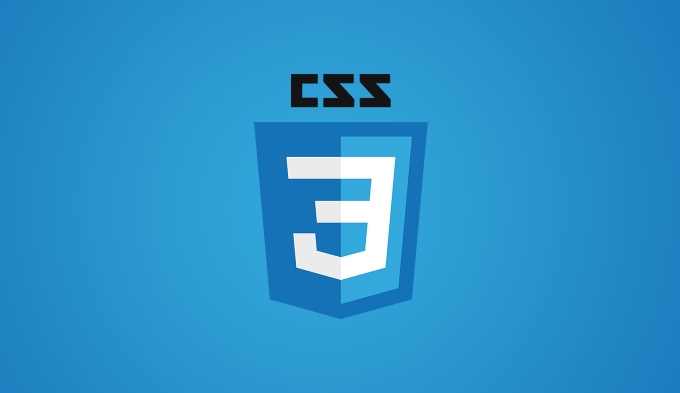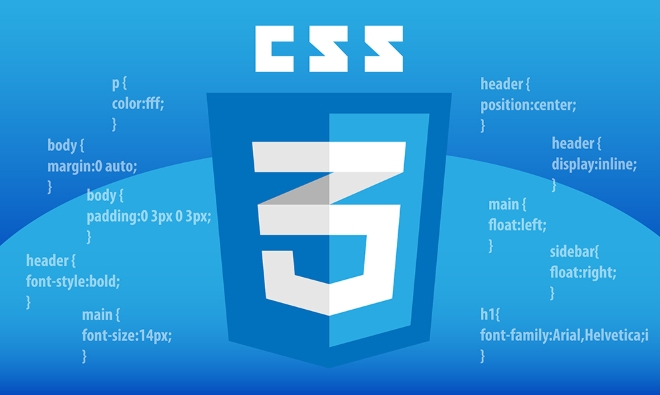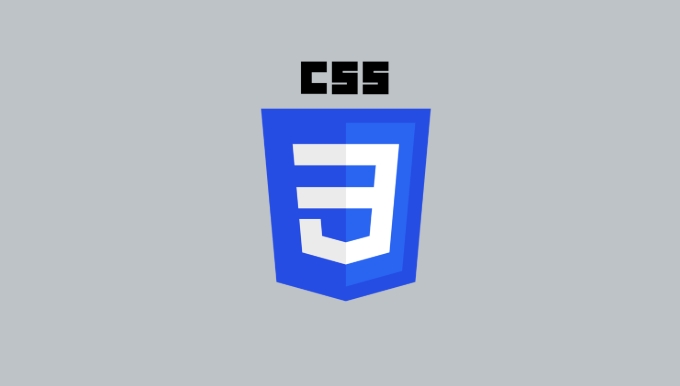What is CSS-in-JS and why would I use it?
CSS-in-JS is a development model for writing CSS styles in JavaScript, with the core of which is to encapsulate styles and component logic. It defines styles through objects or template strings, and dynamically generates style tags to insert pages at runtime, thereby avoiding style conflicts and improving component development efficiency. 1. It makes component development more natural, styles coexist with components, without switching files; 2. Supports dynamic styles, and can adjust styles in real time according to state changes; 3. Automatically add unique class names to effectively avoid style conflicts; 4. Most libraries do not require additional construction configurations and are used out of the box. Mainstream libraries include styled-components, emotion and goober, which are suitable for different project needs. However, when the project is smaller, the team is familiar with traditional CSS, or the performance requirements are extremely high, it may be more suitable for traditional solutions. Whether to adopt CSS-in-JS depends on project structure and team habits.

CSS-in-JS is a development model that directly writes CSS styles into JavaScript files, and is very popular in modern front-end frameworks such as React. Its core philosophy is to encapsulate the style and logic of components together, rather than putting CSS alone in external files like traditionally.

What is CSS-in-JS?
Simply put, CSS-in-JS is to write CSS using JavaScript. It defines the style through a JavaScript object or template string, and then dynamically generates the <style></style> tag at runtime and inserts it into the page.
For example, you may see code like this:
const buttonStyle = {
backgroundColor: '#007bff',
color: 'white',
padding: '10px 20px',
border: 'none',
borderRadius: '4px'
};The advantage of this writing method is that styles can be directly bound to components, avoid style conflicts, and it is easier to implement dynamic styles.

Why would you want to use it?
1. Component development is more natural
In a componentized framework like React, writing styles and components together can better implement encapsulation. You don't need to switch between multiple files, all the component-related content is in one place, making it easier to maintain.
2. Dynamic styles are easier
Traditional CSS is difficult to dynamically modify styles based on state, and CSS-in-JS can be easily implemented. For example, change the button color according to the user's click status:

const getButtonStyle = (isActive) => ({
backgroundColor: isActive? '#ff0000' : '#007bff'
});3. Avoid style conflicts
When using CSS-in-JS, styles are usually automatically added with unique class names, which can avoid the problem of multiple component styles interfering with each other, and are especially suitable for large projects.
4. No additional build steps required
Many CSS-in-JS libraries (such as styled-components, emotion) do not require additional build configuration and are used out of the box and are suitable for rapid development.
What are the common CSS-in-JS libraries?
Currently mainstream libraries include:
- styled-components : The most popular library in the React community, with concise syntax
- emotion : powerful function, supports advanced usage such as server rendering
- goober : a lightweight alternative for performance-sensitive projects
You can choose the right library according to your project requirements. If you are just starting to try it, it is recommended to start with styled-components, which has rich community resources and friendly documentation.
When may CSS-in-JS be not required?
Although CSS-in-JS has many advantages, not all scenarios are suitable for use. for example:
- Small scale and simple structure
- Teams are familiar with traditional CSS or CSS Modules
- Extremely high performance requirements (dynamic insertion style may affect the loading of the first screen)
In this case, traditional CSS writing or CSS Modules may be more suitable.
Basically that's it. CSS-in-JS is a practical solution in modern front-end development, especially suitable for projects with high demand for component development and dynamic styles. Whether to use it depends on your project structure and team habits.
The above is the detailed content of What is CSS-in-JS and why would I use it?. For more information, please follow other related articles on the PHP Chinese website!

Hot AI Tools

Undress AI Tool
Undress images for free

Undresser.AI Undress
AI-powered app for creating realistic nude photos

AI Clothes Remover
Online AI tool for removing clothes from photos.

Clothoff.io
AI clothes remover

Video Face Swap
Swap faces in any video effortlessly with our completely free AI face swap tool!

Hot Article

Hot Tools

Notepad++7.3.1
Easy-to-use and free code editor

SublimeText3 Chinese version
Chinese version, very easy to use

Zend Studio 13.0.1
Powerful PHP integrated development environment

Dreamweaver CS6
Visual web development tools

SublimeText3 Mac version
God-level code editing software (SublimeText3)
 What are common CSS browser inconsistencies?
Jul 26, 2025 am 07:04 AM
What are common CSS browser inconsistencies?
Jul 26, 2025 am 07:04 AM
Different browsers have differences in CSS parsing, resulting in inconsistent display effects, mainly including the default style difference, box model calculation method, Flexbox and Grid layout support level, and inconsistent behavior of certain CSS attributes. 1. The default style processing is inconsistent. The solution is to use CSSReset or Normalize.css to unify the initial style; 2. The box model calculation method of the old version of IE is different. It is recommended to use box-sizing:border-box in a unified manner; 3. Flexbox and Grid perform differently in edge cases or in old versions. More tests and use Autoprefixer; 4. Some CSS attribute behaviors are inconsistent. CanIuse must be consulted and downgraded.
 How to create responsive images using CSS?
Jul 15, 2025 am 01:10 AM
How to create responsive images using CSS?
Jul 15, 2025 am 01:10 AM
To create responsive images using CSS, it can be mainly achieved through the following methods: 1. Use max-width:100% and height:auto to allow the image to adapt to the container width while maintaining the proportion; 2. Use HTML's srcset and sizes attributes to intelligently load the image sources adapted to different screens; 3. Use object-fit and object-position to control image cropping and focus display. Together, these methods ensure that the images are presented clearly and beautifully on different devices.
 Describe the `opacity` property
Jul 15, 2025 am 01:23 AM
Describe the `opacity` property
Jul 15, 2025 am 01:23 AM
opacity is an attribute in CSS that controls the overall transparency of an element, with values ranging from 0 (fully transparent) to 1 (fully opaque). 1. It is often used for the image hover fade effect, and enhances the interactive experience by setting the opacity transition; 2. Making a background mask layer to improve text readability; 3. Visual feedback of control buttons or icons in the disabled state. Note that it affects all child elements, unlike rgba, which only affects the specified color part. Smooth animation can be achieved with transition, but frequent use may affect performance. It is recommended to use it in combination with will-change or transform. Rational application of opacity can enhance page hierarchy and interactivity, but it should avoid interfering with users.
 What is the accent-color property?
Jul 26, 2025 am 09:25 AM
What is the accent-color property?
Jul 26, 2025 am 09:25 AM
accent-color is an attribute used in CSS to customize the highlight colors of form elements such as checkboxes, radio buttons and sliders; 1. It directly changes the default color of the selected state of the form control, such as changing the blue check mark of the checkbox to red; 2. Supported elements include input boxes of type="checkbox", type="radio" and type="range"; 3. Using accent-color can avoid complex custom styles and extra DOM structures, and maintain native accessibility; 4. It is generally supported by modern browsers, and old browsers need to be downgraded; 5. Set accent-col
 Describe the `:has()` pseudo-class (Parent selector)
Jul 15, 2025 am 12:32 AM
Describe the `:has()` pseudo-class (Parent selector)
Jul 15, 2025 am 12:32 AM
The:has()pseudo-classinCSSallowstargetingaparentelementbasedonitschildelements.Itworksbyusingthesyntaxparent:has(child-selector)toapplystylesconditionally.Forexample,div:has(img)appliesstylestoadivcontaininganimage.Multipleselectorscanbeusedwithcomma
 How does browser default stylesheet affect rendering?
Jul 19, 2025 am 02:08 AM
How does browser default stylesheet affect rendering?
Jul 19, 2025 am 02:08 AM
Browser default styles ensure basic readability by automatically applying margins, fills, fonts, and form element styles, but can cause inconsistent cross-browser layouts. 1. The default margin and fill change the layout flow, such as the spacing of titles, paragraphs and lists; 2. The default font settings affect readability, such as 16px font size and TimesNewRoman font; 3. The form elements are very different in different browsers, so the appearance needs to be reset; 4. Some tags such as strong and em have default emphasis styles and need to be explicitly overwritten. Workarounds include using Normalize.css, reset styles, or globally clear margins and fills, while customizing fonts and form styles for consistency.
 How to style the first letter or first line of a paragraph?
Jul 19, 2025 am 02:58 AM
How to style the first letter or first line of a paragraph?
Jul 19, 2025 am 02:58 AM
To beautify the beginning of a paragraph to enhance visual appeal, a common practice is to use pseudo-elements of CSS or manually style the document. In web development, p::first-letter can be used to set the first letter style, such as enlarging, bolding, and discoloring, but it should be noted that it is only suitable for block-level elements; if you want to highlight the entire first line, use p::first-line to add styles; in document software such as Word, you can manually adjust the first letter format or create style templates, and InDesign has a built-in "first-sinking" function suitable for publishing and design; when applying, you need to pay attention to details, such as avoiding complex styles affecting reading and ensuring compatibility and format consistency.
 How to style selection highlighting (`::selection`)?
Jul 16, 2025 am 12:50 AM
How to style selection highlighting (`::selection`)?
Jul 16, 2025 am 12:50 AM
Use the ::selection pseudo-element of CSS to customize the highlighting style when the web page text is selected to improve the aesthetics and unity of the page. 1. Basic settings: define background-color and color through ::selection, such as yellow background with dark gray fonts; specific elements such as p::selection can also be limited. 2. Compatibility processing: Add the -webkit- prefix to be compatible with Safari and mobile browsers, and the Firefox and Edge standards are well supported. 3. Pay attention to readability: Avoid excessive color contrast or too fancy, and should be coordinated with the overall design. For example, choose a soft blue base in dark mode to improve visual comfort. Reasonable use can enhance the texture of the interface, ignore details







